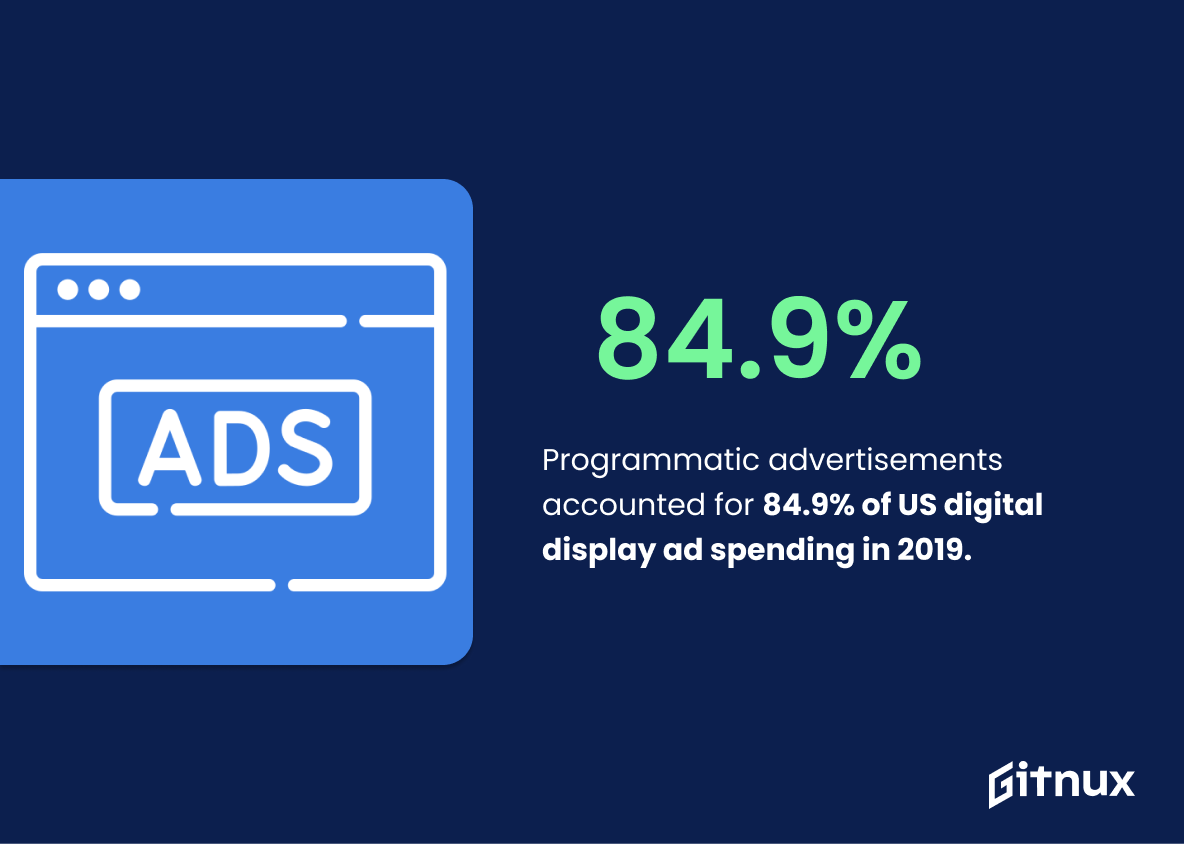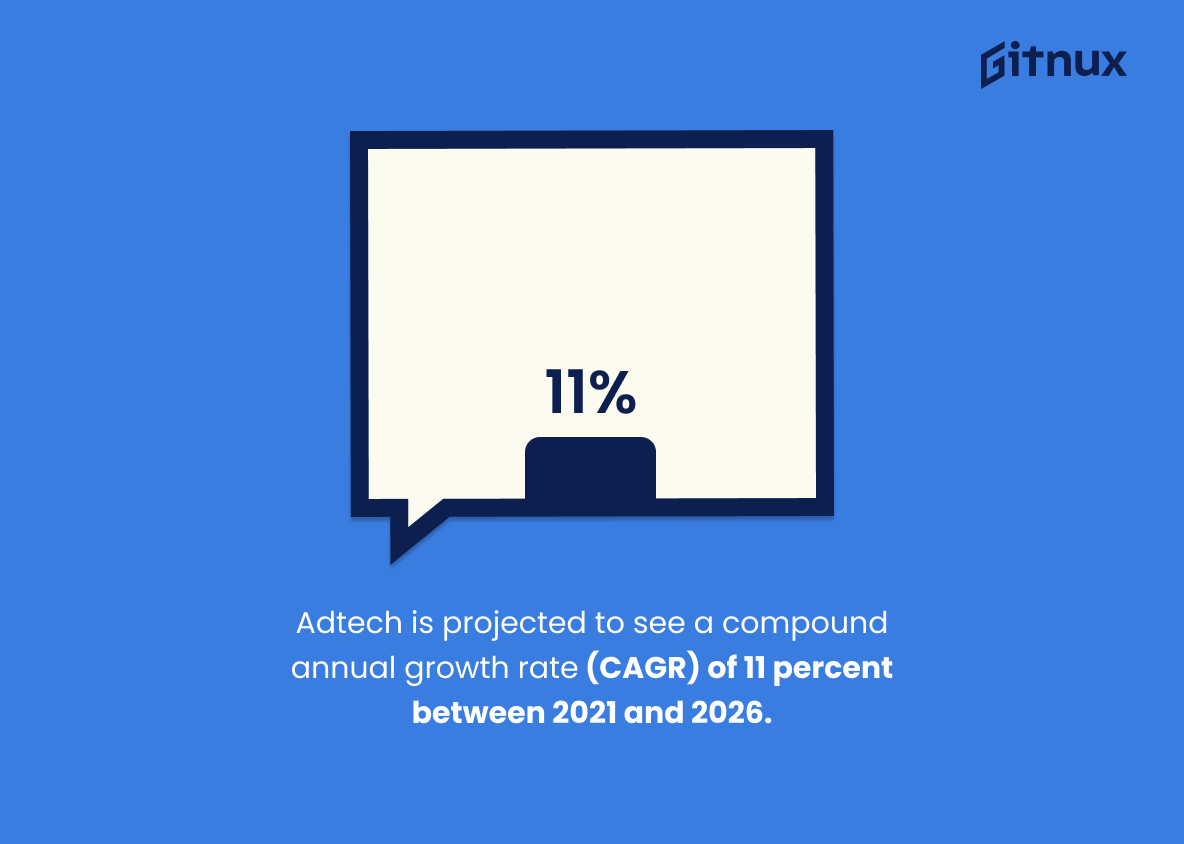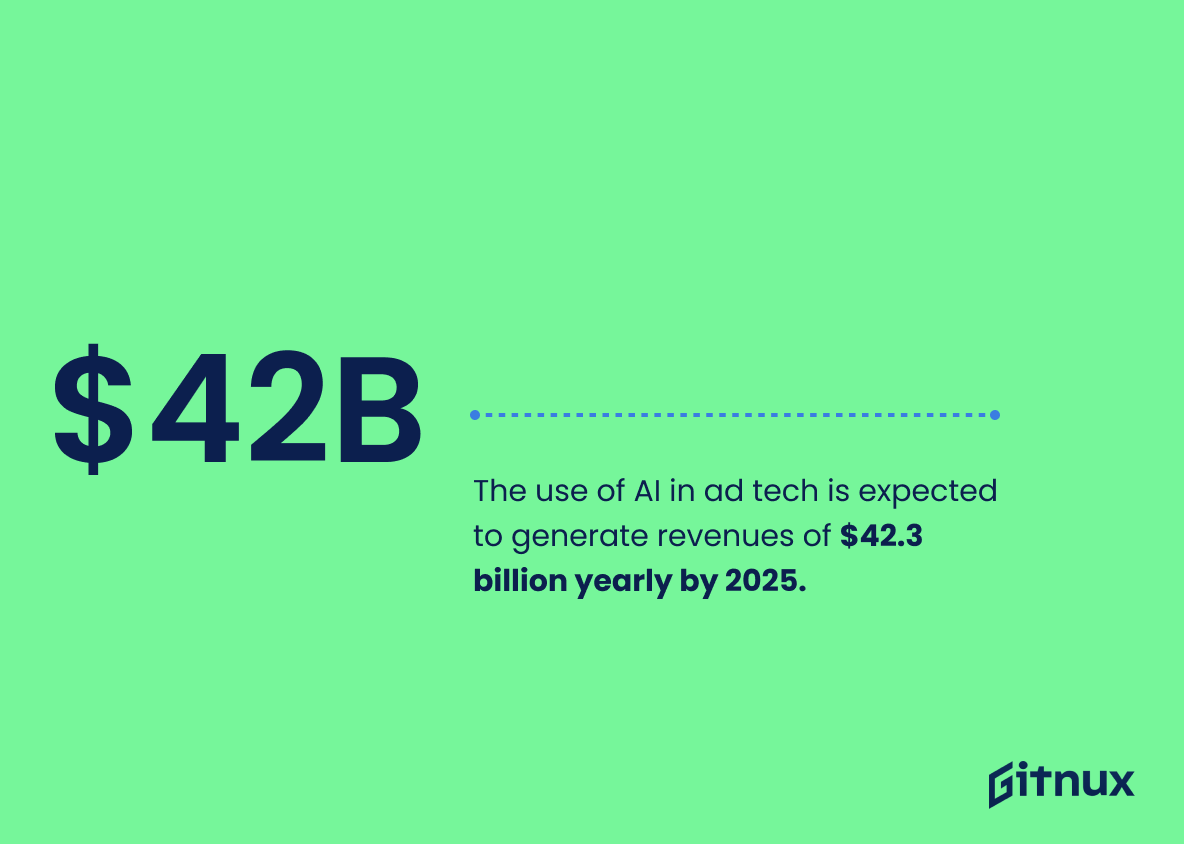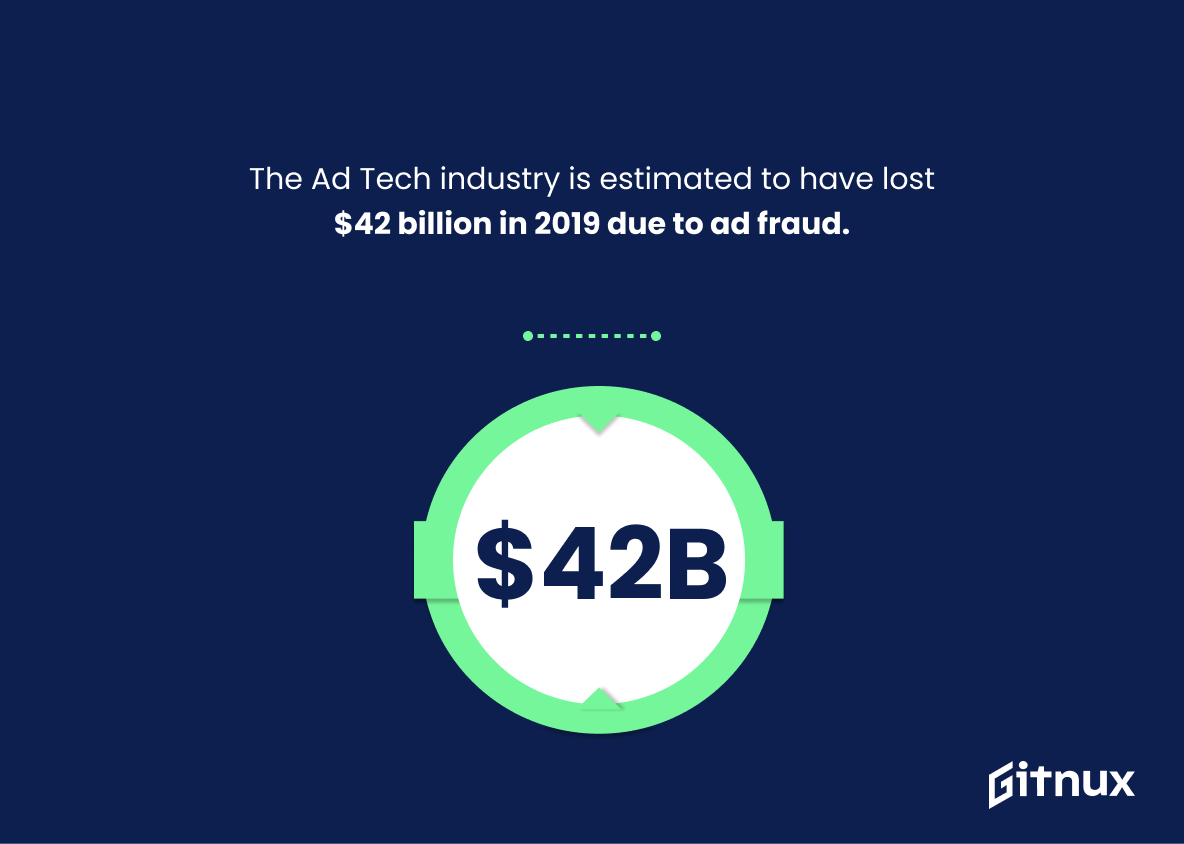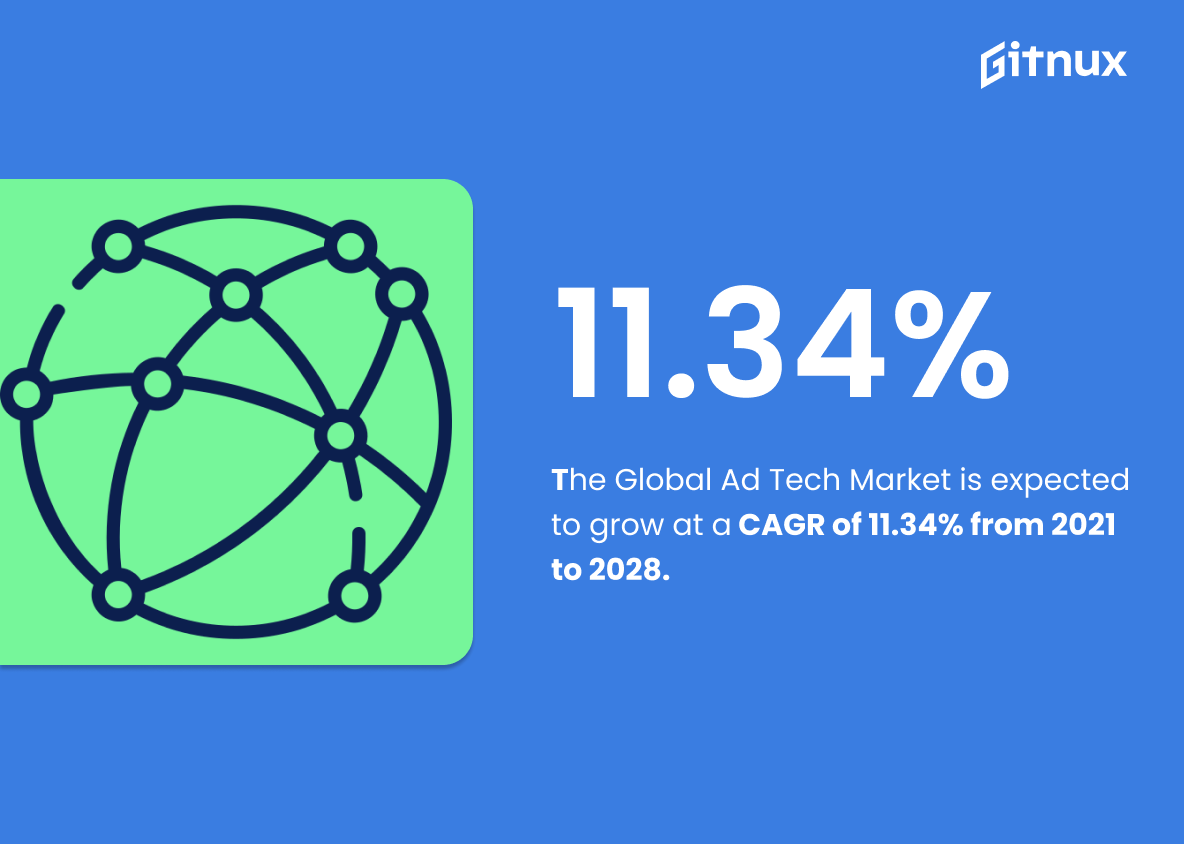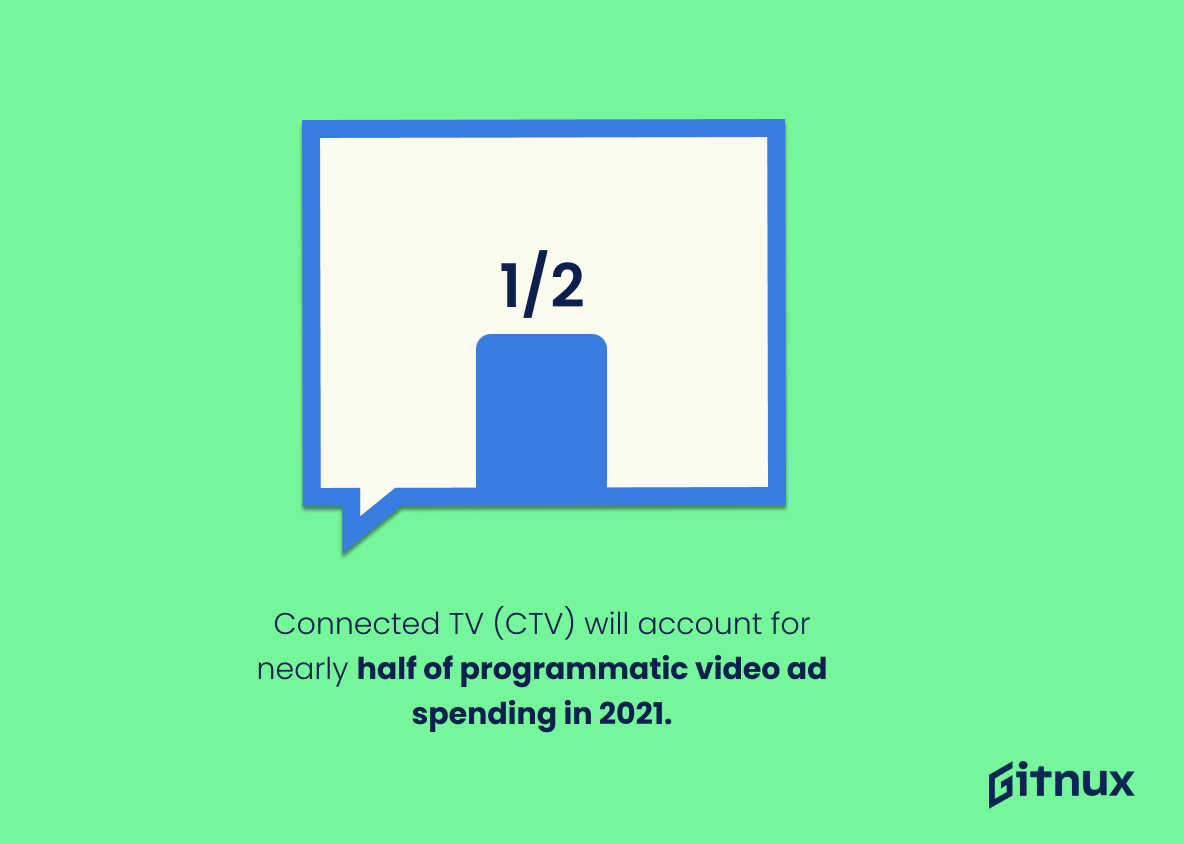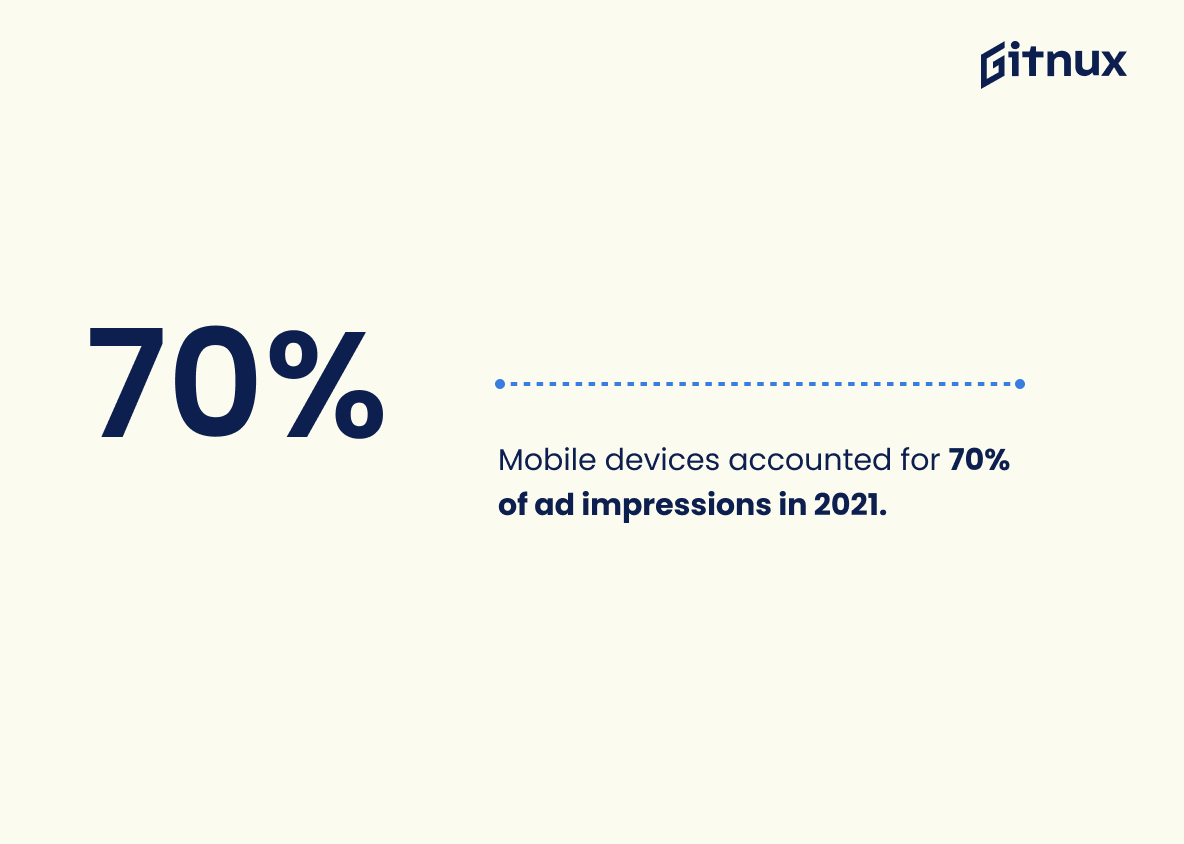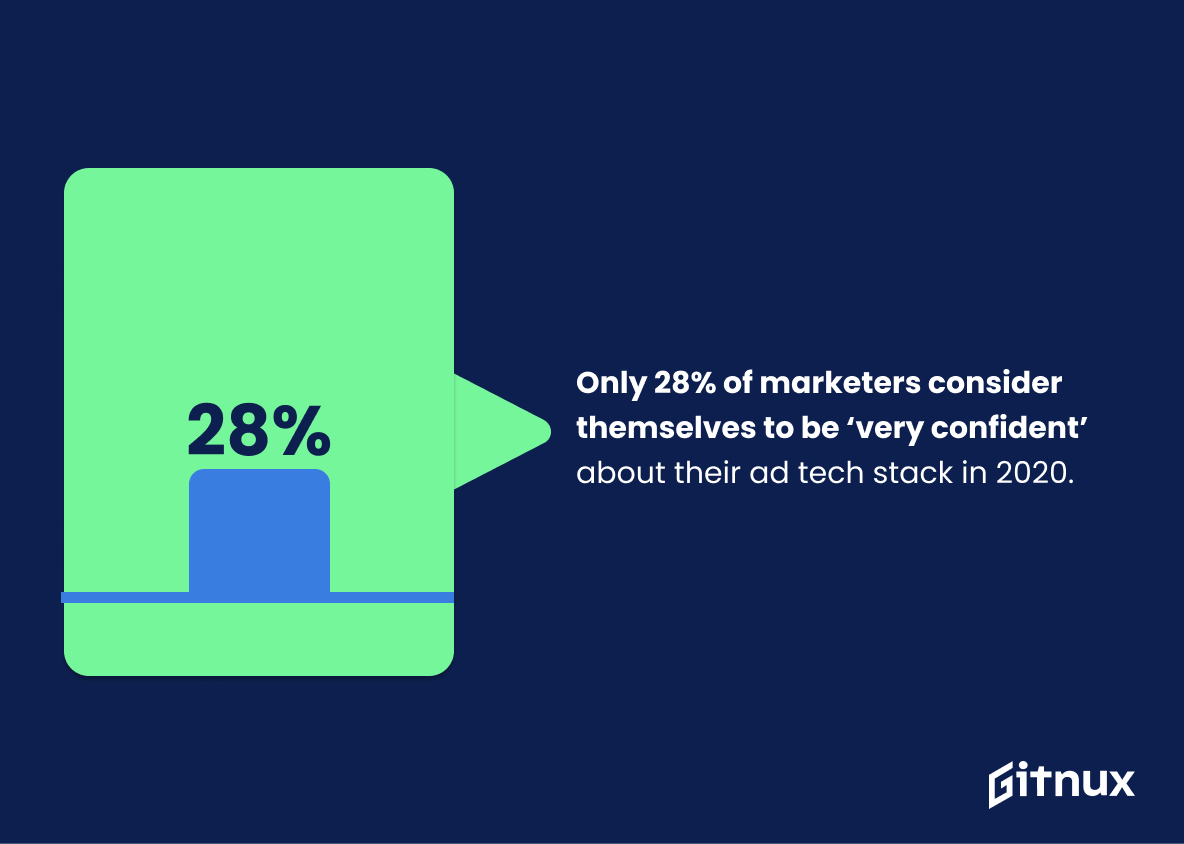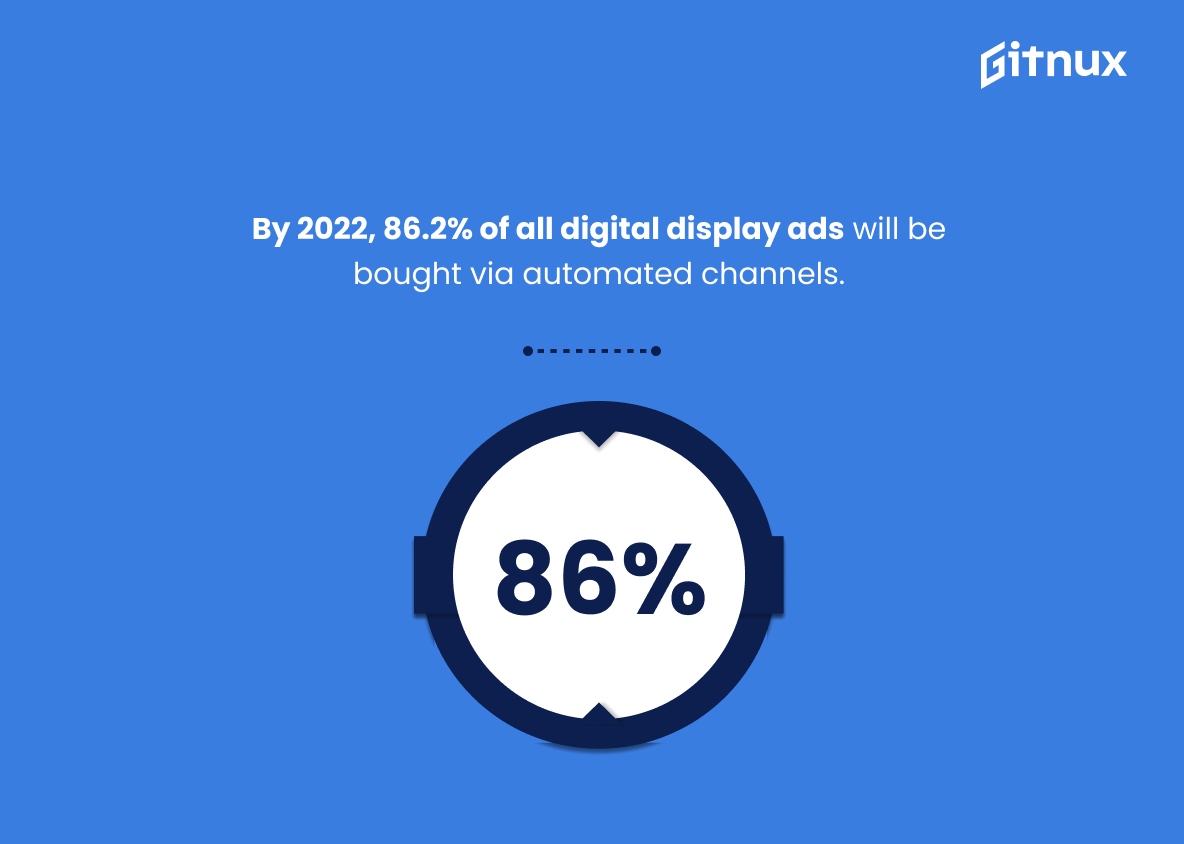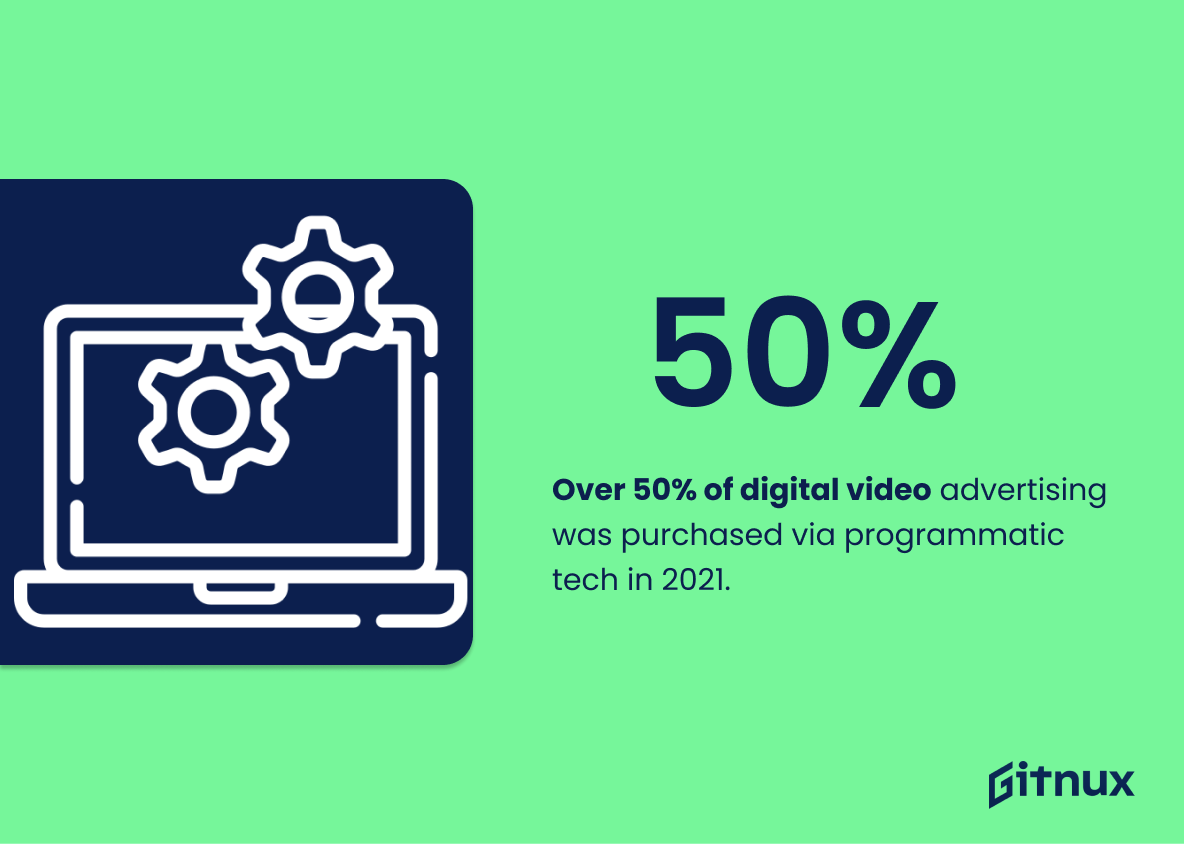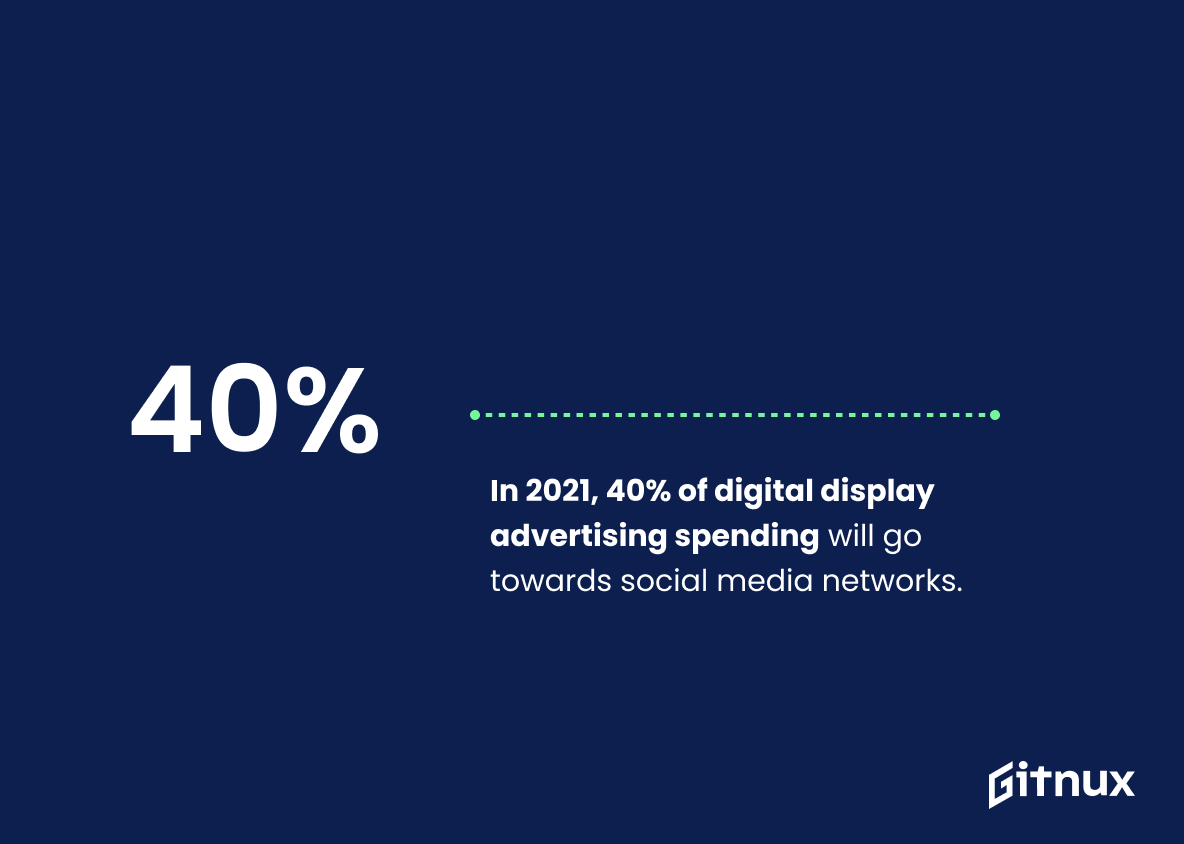In the rapidly-evolving digital landscape, the Ad Tech industry stands at the forefront, constantly pushing the boundaries through innovation and technology. It plays a critical role in elevating online marketing strategies to new heights. This blog post dives deep into the significant Ad Tech industry statistics, offering noteworthy insights and trends.
Whether you’re a marketing enthusiast, a curious tech professional, or a business owner seeking to optimize your digital advertisement campaigns, these statistics will offer a comprehensive understanding of the current state and future potential of the ad tech industry. Brace yourself for a data-led journey through the land of Ad Tech industry.
The Latest Ad Tech Industry Statistics Unveiled
Programmatic advertisements accounted for 84.9% of US digital display ad spending in 2019.
In the vibrant tapestry that is the Ad Tech Industry, the statistic of Programmatic advertisements counting for 84.9% of US digital display ad spending in 2019 shines an illuminating spotlight. Transforming dull data into a lucid narrative, this figure underscores the pervasive adoption of automated buying and selling in advertisement; a lucrative fulcrum in the Ad Tech landscape.
Indeed, it was not but a dream for programmatic advertising to dominate digital display ad spending, yet here now we stand at almost 85% in the US in just 2019. This, my friends, heralds the ascension of programmatic trading to kingpin status in digital ad expenditure. Would we have witnessed the big-ticket leverage of Ad Tech without such strides? Unlikely. This statistic, therefore, is the golden thread in our story of the Ad Tech Industry—the cornerstone of today’s digital advertising revolution.
Adtech is projected to see a compound annual growth rate (CAGR) of 11 percent between 2021 and 2026.
This illuminating statistic propels the narrative of the Adtech industry’s future trajectory. Forecasting an 11 percent CAGR between 2021 and 2026, it not only underscores the growth potential within the space, but also puts into relief the dynamism that undergirds the Adtech sector. It punctuates the conversation around market trends, industry evolution, and the opportunities that arise for businesses and investors who are ready to seize them.
In the context of a blog post about Ad Tech Industry Statistics, this data point becomes a cornerstone around which we can weave the larger story of innovation, market expansion, and revenue generation. The statistic in essence, reigns as a testament to the robust growth and resilience of the Adtech industry.
The use of AI in ad tech is expected to generate revenues of $42.3 billion yearly by 2025.
Delving into the sheer potency of AI in ad tech, it forecasts an astronomical annual revenue of $42.3 billion by 2025. This revelation not only crystallizes the monumental potential AI possesses to disrupt the ad tech landscape, but it also underscores the significant role AI is slated to play within this bustling industry. This figure serves as a beacon for investors, marketers, and advertisers, enlightening them about the lucrative opportunities that lie in the amplifying symbiosis between AI and advertising technology.
In a blog post about Ad Tech Industry Statistics, featuring this factor would certainly offer readers valuable insight into the ascending influence of AI, hence stirring inquisitiveness and encouraging further exploration into harnessing AI’s power in this space.
As of 2021, about 58% of digital video ad dollars in the US are transacted programmatically.
Unveiling the vibrant panorama of the Ad Tech industry, the insight that around 58% of US digital video ad expenditures in 2021 are transacted programmatically represents a pivotal change in the advertising landscape. It’s not just a number, but a testament of the burgeoning trend towards automated buying and selling of advertising space.
This dynamic shift reveals a new-age industry modus operandi, where the ad tech industry is harnessing the power of data and technology to streamline operations. The figure underscores the skyrocketing trust and dependency on programmatic advertising, ultimately resulting in a massive economic shift. It is a beacon illuminating the future course of the industry, where machine learning and algorithms could take precedence over conventional manual transactions.
In essence, this statistic serves as a harbinger of the future, shedding light on the increasing reliance on programmatic advertising, hinting at new opportunities, risks and advancements the ad tech industry needs to fathom and harness. It’s like watching the trailer of a gripping movie, offering us a glimpse into an exciting future brimming with technological synergy.
The Ad Tech industry is estimated to have lost $42 billion in 2019 due to ad fraud.
Peeling back the layers of the Ad Tech industry, it is impossible to ignore the chilling echo of a $42 billion lost to ad fraud in just a single year, 2019. As the aftershock of this figure resonates through every corner of the industry, it reveals a multifaceted reality of significant financial loss; a reality painted in sharp contrast to the industry’s otherwise vibrant growth and potential.
Likening it to a corrosive rust quietly gnawing at the foundations of a formidable structure, this eye-opening figure opens avenues for a deeper exploration into the Ad Tech realm. It reinforces the urgency of continually innovating smarter solutions and tighter security measures.
In the beautifully complex ballet of the Ad Tech industry, every statistic maneuvers with purpose and effect. Thus, the staggering $42 billion loss manifests as a solemn solo, commanding attention towards the dire issue of ad fraud, reminding us about the importance of vigilance, resilience, and continual evolution in the face of challenges. This statistic, therefore, adds an essential layer of depth to the discourse on Ad Tech Industry Statistics in a blog post setting, serving as both a cautionary tale and a call to action.
The Global Ad Tech Market is expected to grow at a CAGR of 11.34% from 2021 to 2028.
Grasping the projected growth rate of the Global Ad Tech Market, expected to expand at a CAGR of 11.34% from 2021 to 2028, serves as a bonanza of insights. In the bustling arena of Ad Tech Industry statistics, this estimation becomes a shining beacon indicating a myriad of opportunities and changes up ahead. Essentially, it not just signals the robust health and dynamism that characterize this market, but also forecasts an environment where competition, innovation and progress will run at an accelerated pace.
Thus, for those plying their trade in this sphere or considering venturing into it, this statistic offers a clear vision of the terrain that lies in the future, fostering informed decision-making and strategy planning. Additionally, it affirms the pivotal role of ad tech in fueling business growth and consumer engagement in an increasingly digital world.
Connected TV (CTV) will account for nearly half of programmatic video ad spending in 2021.
In the dynamically changing world of ad technology where precision and efficiency are the keystones to marketing success, the prophecy revealing Connected TV to capture nearly half of programmatic video ad expenditure in 2021 heralds a decisive moment, a shifting point you may say, for marketers across the globe. This statistic, in essence, illuminates the looming dominance of CTV platforms in the programmatic advertising landscape.
Observe the spotlight shining on the gargantuan and still growing CTV audience, an audience that is pivotal for marketers to reach. This growth spurt not only validates the evolution of audience preferences, pointing towards an insatiable appetite for digital content, but also underscores CTV as the new playground for advertisers. This shift in ad spends signifies that marketers are now recognizing the efficacy and reach of CTV, enabling them to deliver personalized ads to the right target group and maximize their return on investment.
As the statistic rises from the white noise of data, it is inevitably underpinning the transformation of the ad tech industry, catalyzing a colossal transition from traditional TV advertising to the more dynamic, data-driven programmatic video ad on CTV platforms.
Mobile devices accounted for 70% of ad impressions in 2021.
Highlighting a fact as substantial as the share of mobile devices contributing 70% of ad impressions in 2021 can furnish new insights into the digital ad industry’s dynamic evolution. This powerful piece of data underscores a seismic shift in the way audiences consume ads, moving away from traditional platforms like desktop to more personal and accessible mediums such as mobile phones.
The pressing importance of catering to a mobile-first audience is thus stressed, influencing businesses to modify their marketing strategies and invest more in mobile-friendly ad technology. Thus, this statistic acts as a compass guiding the Ad Tech industry towards the future.
Only 28% of marketers consider themselves to be ‘very confident’ about their ad tech stack in 2020.
Unveiling a rather thought-provoking revelation, the datum of merely 28% marketers resoundingly articulating high confidence in their ad tech stack illuminates a vivid reality of the ad tech industry in 2020. As we chart the digital advertising realm, this statistic underscores an undercurrent of uncertainty or lack of profound understanding that pervades the professionals managing ad technologies.
Potentially a consequence of rapidly evolving technologies, intricate systems or a shortfall in skills training, such low confidence could result in missed opportunities, efficacy issues or even strategy blunders. So, as we peer through the looking glass into the ad tech world, gauging and elevating marketers’ confidence are indispensable in driving optimisation and integrating innovative ad solutions for successful outcomes. The statistic underscores the need to champion knowledge enhancement in this field to truly unlock the potential of today’s sophisticated ad technologies.
By 2022, 86.2% of all digital display ads will be bought via automated channels.
Unveiling a glimpse into the future of the advertising industry, this prediction of a massive 86.2% of all digital display ads being purchased through automated channels by 2022 brings a seismic shift into focus. It underscores the imminent dominance of automation in ad buying, signaling a revolutionary wave in the Ad Tech industry.
Predicated upon this statistic, we’re seeing the tipping point where traditional manual ad buying is being overshadowed by the more efficient, data-driven approach of automated platforms. The digital ad industry, a theatre once dominated by human touch is, therefore, on the brink of becoming a realm operated, analyzed, and optimized largely by cutting-edge tech and algorithms. For marketers, advertisers, and businesses at large, this shift doesn’t just imply a change of methods, but a complete overhaul in strategy, skills, and systems -a virtual transformation in the very fabric of Ad Tech industry.
Jumping aboard the automated bandwagon is no longer a suggestion, but an imperative for staying competitive in this rapidly advancing sector. As such, this statistic not only serves as a testament to the rise of automated ad buying, but also an essential compass pointing towards where the focus and investments in the industry need to steer.
Over 50% of digital video advertising was purchased via programmatic tech in 2021.
Undeniably, the detailed numerical snapshot of “Over 50% of digital video advertising being purchased via programmatic technology in 2021” offers a definitive proof of the burgeoning influence of automation in the advertising landscape. In the dynamic world of Ad Tech Industry, this data point serves as a compelling narrative that underscores the adventure into uncharted realms of technology-driven strategies.
This value is not just a dry number; it’s an evolving story of the paradigm shift towards machine learning and AI, shaping the way businesses target their potential consumers. Translating into the rise of efficiency and precision in ad purchasing, the statistic outlines the industry’s keyword for the future—’programmatic’.
In the digital dance of robots and algorithms, this statistic kindles the spotlight on the trendsetter of this ball—programmatic tech. For any party interested in the booming Ad Tech industry, this substantial piece of data implies an undeniable takeaway—adapt to the growing embrace of programmatic tech or risk fading into obsolescence. Meanwhile, it stirs up a plethora of questions for further exploration, such as what opportunities and challenges does this massive adoption pose? A statistic worthy of attention, indeed.
Advertisers are expected to spend $81 billion on programmatic digital display advertising in 2021.
Dive deep into the maelstrom of the advertising sector and you stumble upon this goliath of a number – a staggering $81 billion. It’s the colossal amount predicted to be allocated to programmatic digital display advertising in 2021. This figure doesn’t just command awe; it paints a vivid picture of the escalating reliance on automation in the ad tech industry.
It bears testimony to the transition from traditional advertising paradigms into a brave new world where technology reigns supreme. With every billion spent, industry players amplify their quests for precision targeting, efficiency, and real-time audience engagement, underscoring the continuing evolution of the ad tech arena.
In 2021, almost 40% of programmatic digital display advertising spending will go towards social media networks.
This particular statistic illuminates a significant trend in the Ad Tech Industry. It uncovers the rising prominence of social media as an advertising platform, highlighting that a healthy 40% chunk of programmatic digital display ad spend is being channeled into these networks in 2021. It’s like a beacon shining light on where the advertising dollars are flowing, pointing to the increasing power and influence of social media in our digital landscape.
Consequently, any decision-maker or stakeholder in the AdTech industry should not ignore this statistic, as it can offer them vital insights for developing effective and future-focused strategies. It allows them to forecast where their consumers are most likely to be and how best they can position their advertising for maximum impact and engagement.
Conclusion
In conclusion, the Ad Tech industry is a dynamic and rapidly evolving sector. The statistical trends we’ve discussed confirm that it is a fundamental pillar in our digitally-dominated world. The increasing use of programmatic advertising, the expansion of mobile and video ads, and the promising developments in areas like AI and data privacy will continue shaping the industry’s future. Staying updated with the latest Ad Tech industry statistics can provide advertisers with valuable insights and a competitive edge in their campaigns.
The exciting part about the Ad Tech industry is that it continues to evolve and surprise us. It will surely be fascinating to observe how these statistics morph over the next few years in response to industry shifts, consumer preferences, and technological advancements.
References
0. – https://www.www.statista.com
1. – https://www.www.globenewswire.com
2. – https://www.www.prnewswire.com
3. – https://www.www.globalwebindex.com
4. – https://www.digitalcontentnext.org
5. – https://www.www.emarketer.com
6. – https://www.www.advertiserperceptions.com
7. – https://www.www.juniperresearch.com
